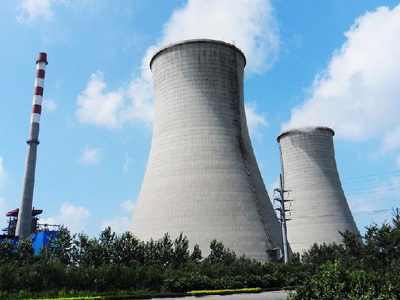OZONE APPLICATION FIELDS
Waste-gas purification(denitrification)
Ozone applied in waste-gas purification

Waste-gas purification(denitrification)
Related Products: http://www.o3tech.cn/product/large-scale-ozone-generator-1kg.html
1#: Overview
The use of ozone as a maintenance treatment for cooling towers has good potential for operation and maintenance savings in the Federal sector. A small amount ofozone acts as a powerful biocide that decreases or nearly eliminates the needto remove quantities of water from the cooling tower in order to decrease the concentration of organic and mineral solids in the system. Ozone treatment can also reduce the need for chemical additives added to the cooling tower water.
In a properly installed and operating system, bacterial counts are reduced, with a subsequent minimization of the buildup of biofilm on heat exchanger surfaces.The resulting reduction in energy use, increased cooling tower operating efficiency,and reduced maintenance effort provide cost savings as well as environmental benefit and regulatory compliance with respect to discharge of waste water from blow down.
Cooling towers associated with chillers for air-conditioning are good candidates forozone application. Ozone may be a corrosion stimulant rather than an inhibitor,and this can be a factor in some circumstances. Nevertheless, it is easier tocombat corrosion in a clean system than in one that is biologically and mineralogically fouled.
Ozone is not a corrosion inhibitor; however, the higher concentration ratios resulting from the reduced blow down volumes raise the pH of the recirculating water, which helps protect the system from corrosion. This same pH condition will promote the precipitation of silicates and calcium carbonate if sufficient pretreatment of make-up water is not provided. Lower pH will remove the scale but will also increase the corrosion rate from the ozone. For this reason,make-up water must be of sufficient quality to avoid these problems.
The strong oxidation potential of ozone is what makes it most attractive for use as a biocide in water systems. However, this same property also makes it difficult to use ozone when there is a large chemical oxygen demand (COD) present (thiswill consume available ozone) in the water or if local air conditions bring in large quantities of organics to the tower. The latter condition is the reason it is not possible to implement ozone water treatment in towers within chemical plants or at oil refineries. In addition, ozone is corrosive to some materials such as rubber fittings, gaskets, and certain kinds of metals and alloys. Ifthese materials are present in a cooling tower, they should be replaced before ozone system installation if it is practical and economical to do so.
Once ozone is in the liquid phase, it will last only a short period of time; thus,maintaining an ozone residual for more than approximately 10 minutes can be difficult.This limits the application of ozonation in large cooling towers. In large towers with 100,000 or more gallons, multiple injection points may be necessary.
Make-up water that is high in mineral content or dissolved solids may not be conducive to effective treatment; testing should take place before a system is installed and on a periodic basis during operation. A side-stream filter may be required on cooling towers operating with make-up water quality in excess of 150 ppm calcium hardness. In cases where hardness is in excess of 500 ppm as CaCO3, orsulfates >100 ppm, ozone can be eliminated as a viable cooling tower water treatment. A "Cooling Tower Worksheet" is provided in Appendix A andcan be used to characterize the quality of make-up water.
2#:The Technology in Perspective
Much excitement has been generated around this technology. Manufacturers and vendors see a huge market; cooling tower operators see the potential costs savings,environmental benefits, and reductions in maintenance and health hazards. As aresult, many players have appeared in the field along with a variety of products, services, and performance claims. With each installation, more islearned about actual performance, cost, and benefits.
There have been reports of success and of failure. Manufacturers indicate that many of the failures were due to poor design or inferior quality ozone-generating equipment. Sometimes the application of ozone was inappropriate due to the make-up water condition or the tower operating conditions. In these situations,a traditional chemical treatment program will be more effective.
There are many reasons to consider ozone: when chemical costs are high or chemical management is burdensome, when chemical water treatment is not effective, when water and sewer charges are high or increasing, or when local regulations require blow down to be treated before discharge to surface waters.





